The History of Florida (90 page)
Read The History of Florida Online
Authors: Michael Gannon
Tags: #History, #United States, #State & Local, #Americas

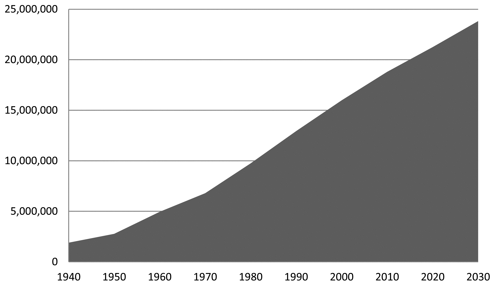
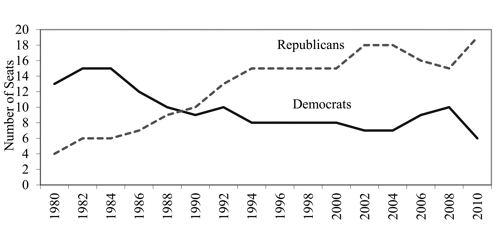
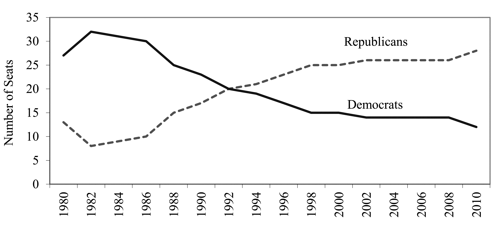
Florida’s Explosive Population Growth. Source: Bureau of Economic and Business Re-
search, “Florida Population: Census Summary 2010,” April 2011. Bureau of Economic and
Business Research, “Projections of Florida Population by County, 2009–2035,” March
2010.
proof
Partisan Makeup of U.S. House Delegation.
Party Seats Won in Florida State Senate Elections.
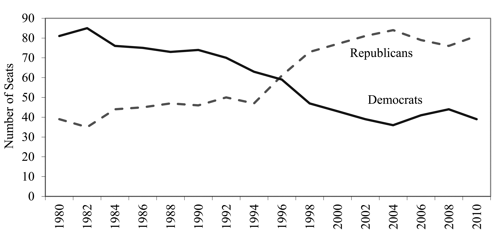
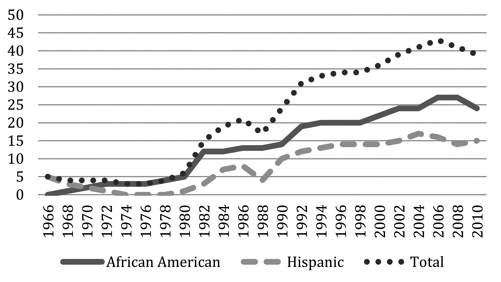
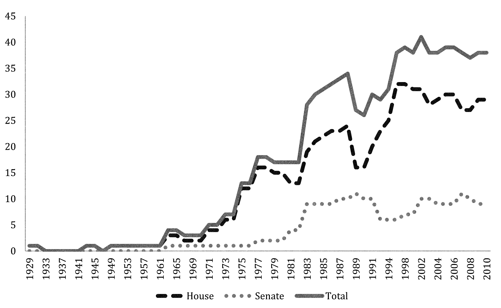
Party Seats Won in Florida State House Elections. Source: Florida Division of Elections.
proof
Minority Members of the Florida Legislature 1966–Present. Source: Compiled from
Florida House and Senate records.
Number of Women in the Florida Legislature. Source: Compiled from Florida House
and Senate records.
Florida Politics · 431
Minority Pathbreakers
The first African American since Reconstruction (Joe Lang Kershaw) was
elected to the state legislature in 1968. He was followed in 1970 by the first
black female legislator, Gwen Cherry, a Miami attorney and FAMU gradu-
ate. The first black state senators since Reconstruction were elected in 1982:
Arnett E. Girardeau from Jacksonville and Carrie Meek from Miami. The
keys to more black political power in the state were the adoption of single-
member legislative districts in 1982 and federal court-ordered redistricting
in 1992. In that year, three districts (two in South Florida and one in Jack-
sonvil e) were crafted specifical y with the intent to maximize the oppor-
tunity for black representation in the congressional delegation to comply
with the federal Voting Rights Act. Joseph Hatchett was the first black ap-
pointed to the Florida Supreme Court by Governor Reubin Askew (D) in
1975. Hatchett became the first African American to win a statewide office
in the entire South, when he won a contentious, racial y charged election
to keep the seat in 1976. In 2010, Jennifer Carrol , a native of Trinidad and
a Republican, became the first black executive elected statewide when she
became Florida’s lieutenant governor.22
Most of the Hispanics serving in the Florida Legislature have been Cuban
Americans, although some of the earliest Hispanic legislators were
Puerto
proof
Rican
Democrats Maurice Ferre from Miami and Elvin Martinez of Tampa.
Both were first elected in 1966. Republican Roberto Casas became the first
Cuban American
legislator in the Florida House in fifty-seven years when he
won a special election in 1982. Republican Ileana Ros-Lehtinen, who emi-
grated from Havana to Miami in 1960 at the age of eight, was the first female
Cuban American legislator. She, too, was elected to the House in 1982. Both
Ros-Lehtinen and Casas moved up to the state Senate in 1986. In 1988, Bob
Martinez (R) made history by being the first Hispanic to be elected governor
of Florida. Once the Democratic mayor of Tampa, Martinez had switched
to the Republican Party before running for governor. Raoul G. Cantero III
became the state’s first Hispanic Supreme Court justice when Governor Jeb
Bush (R) appointed him to the bench in 2002. Cantero is the grandson of
Fulgencio Batista, the former Cuban dictator who was overthrown by Fidel
Castro. At the congressional level, then State Senator Ileana Ros-Lehtinen
won the special election for a vacant seat in the U.S. House of Representa-
tives in 1989, becoming the first Hispanic in Congress from Florida in 166
years. (Joseph Marion Hernandez, who served from 1822 to 1823, was the
first.) It was not until 2004 that Cuban-born Mel Martinez (R) beat Betty
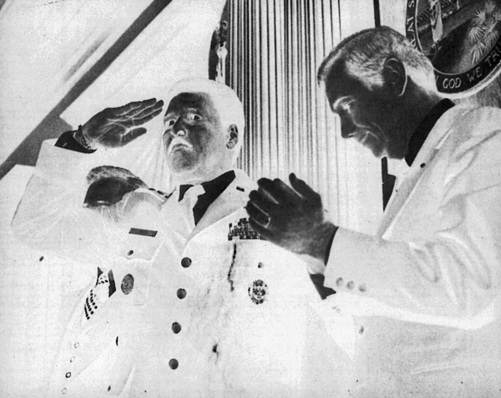
432 · Susan A. MacManus and David R. Colburn
Reubin O’Donovan Askew (
right
) served two terms as governor, 1971–79. The sedate,
judicious former state senator from Pensacola was the first to be elected to two full
proof
terms. His administration was characterized by many progressive initiatives, includ-
ing a Sunshine Law that required financial disclosure by all state officials and a state
income tax on corporations. He is shown here at the Capitol on 14 April 1976 honoring
Pensacola-born Air Force General Daniel “Chappie” James, the highest-ranking African
American in the armed forces.
Castor (D) in a tight race to become the first Cuban American elected to the
U.S. Senate.23
The Growing Strength of Republicans
The Republican Party gradual y emerged as a viable second party in the
1960s. In 1966, the party captured the governorship in a stunning develop-
ment, after having failed to chal enge seriously for the office since 1900.
The party’s growth was principal y the result of the influx of Republican-
leaning retirees from the Midwest, immigrants from Cuba, conservatives
from other southern states, and north Florida conservative Democrats who
began voting Republican in the Reagan years as Democrats running nation-
al y were perceived as too liberal.
Florida Politics · 433
Middle-class, suburban Republican retirees from midwestern states
streamed via I-75 into central and southwest Florida, while senior Demo-
crats from northeastern states poured into Florida via I-95 and settled in
Miami-Dade, Broward (Fort Lauderdale), and Palm Beach Counties. Re-
publican retirees are still more heavily concentrated on the southwest side
of the state.24
Cuban Americans, who fled Communist Cuba in 1959 and settled in
Dade County, made a rapid and remarkably successful adjustment to Amer-
ican life. Their middle-class status and the size of the Cuban community in
south Florida facilitated their economic advancement and also made them
a political force in Dade County and in Florida general y. Because of their
opposition to Fidel Castro and communism, they focused their attention
primarily on foreign affairs, but they were also strong advocates of an un-
fettered American capitalism. Beyond these concerns, they have been gen-
eral y conservative on social programs and issues of race. The size of this
community and its particular agenda have combined to add a further ethnic
dynamic to Florida’s politics. In some of the state’s largest metropolitan ar-
eas, Hispanics and African Americans have become more competitive with
each other than with Anglos for elective political posts, whether local, state,
or congressional.
proof
The Republican Party also gained support from some conservative
Democrats who were drawn to Ronald Reagan’s emphasis on smaller gov-
ernment and lower taxes. During the Reagan years (1981–89), Republican
identification in Florida leaped from 20 to 40 percent of the electorate. For
some Democrats, the national party and its presidential nominees were just
too liberal, with the exception of southern Democrats who ran (Lyndon